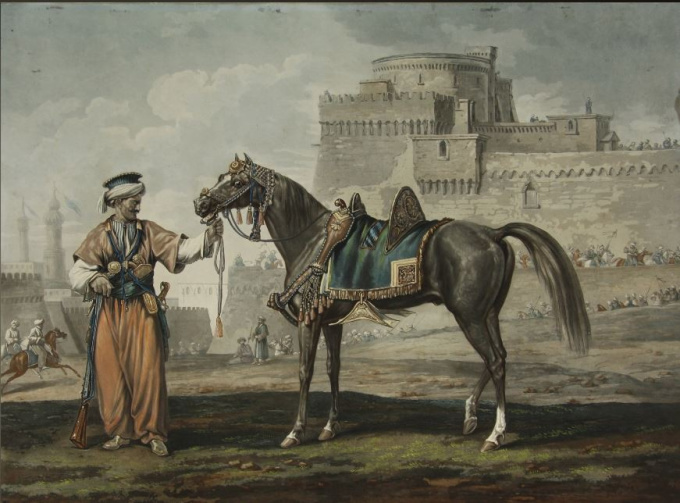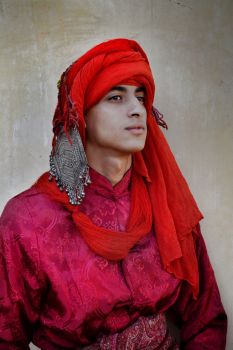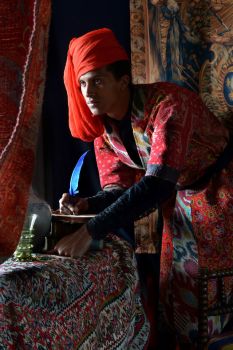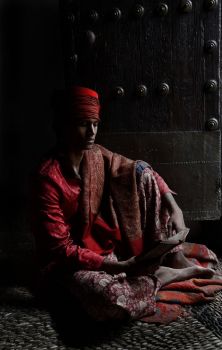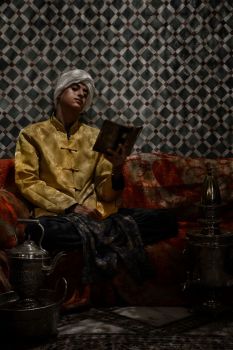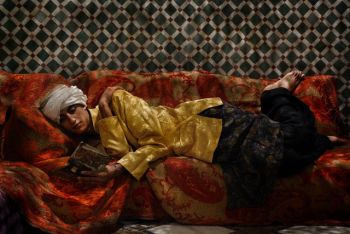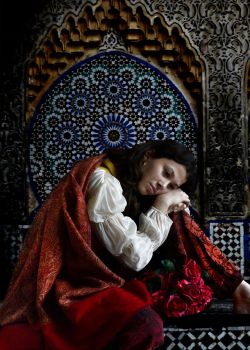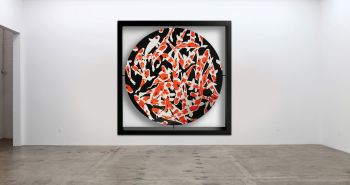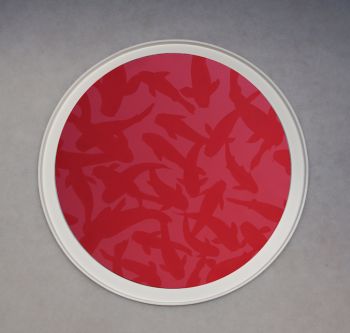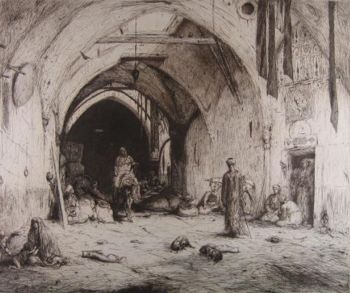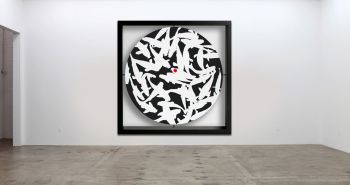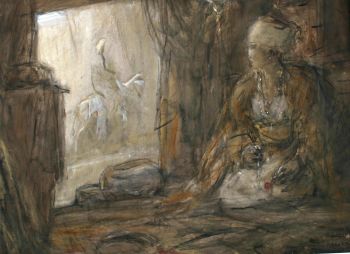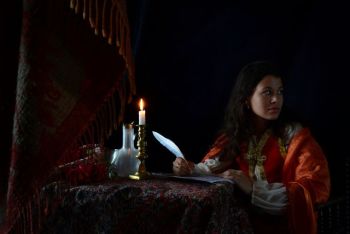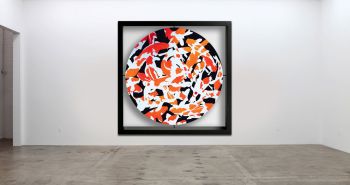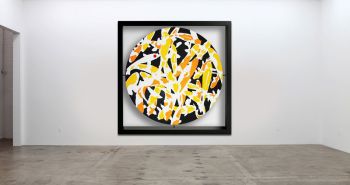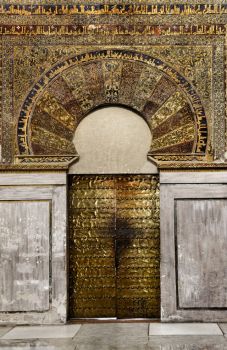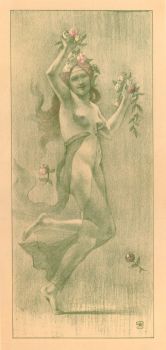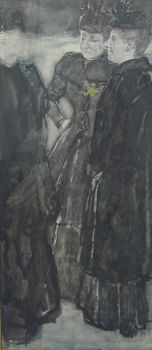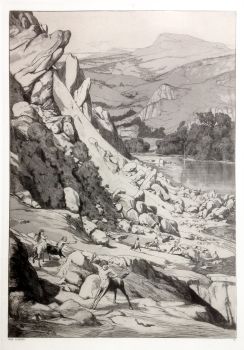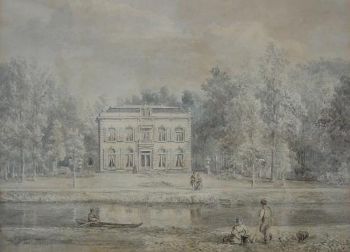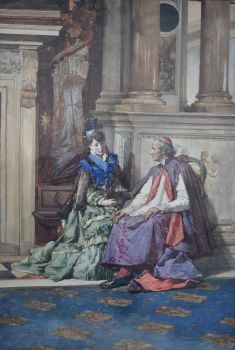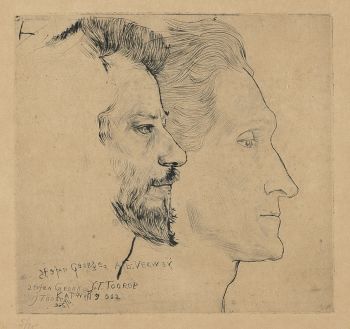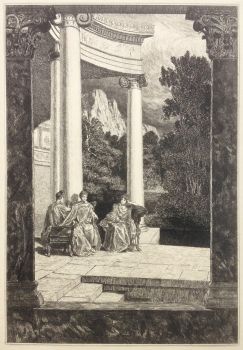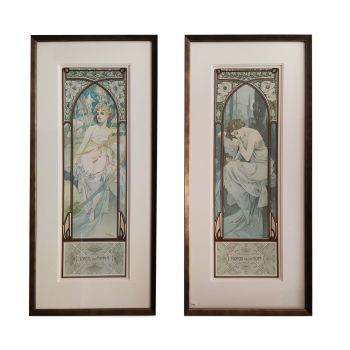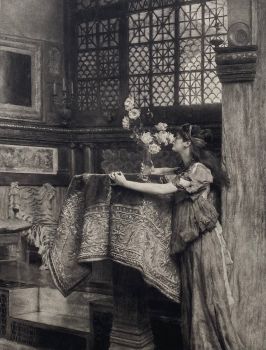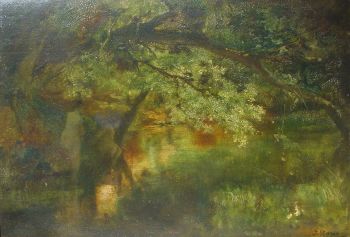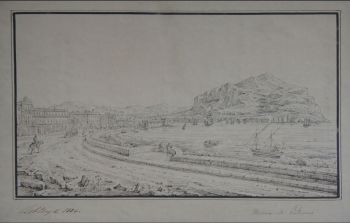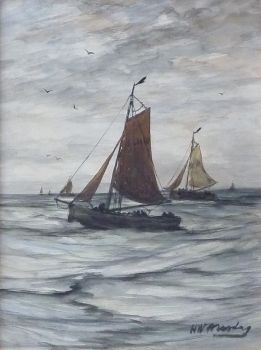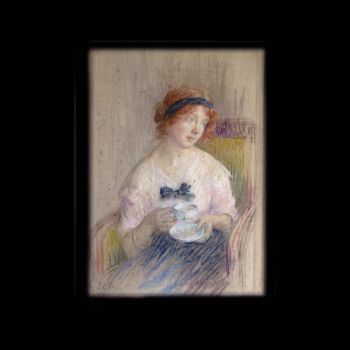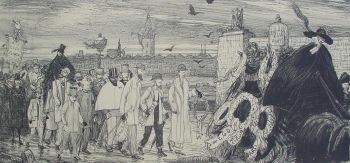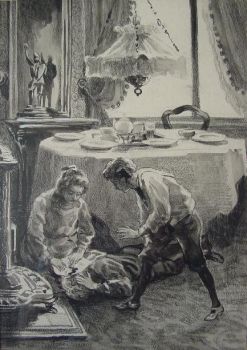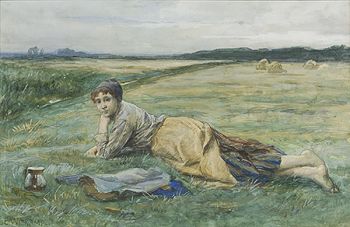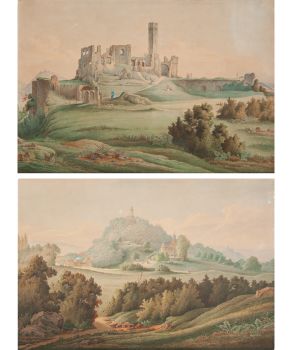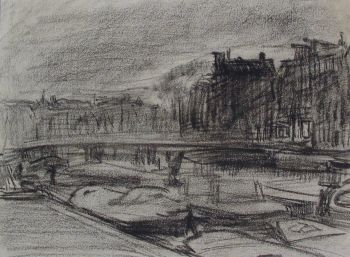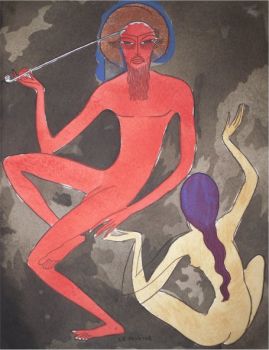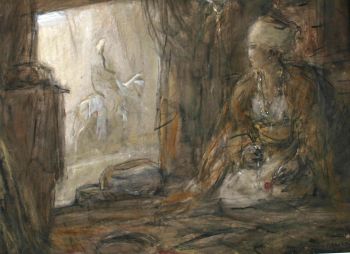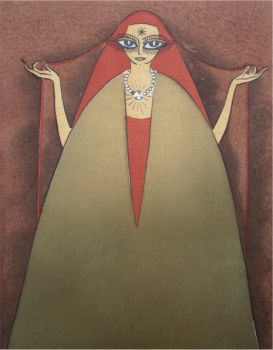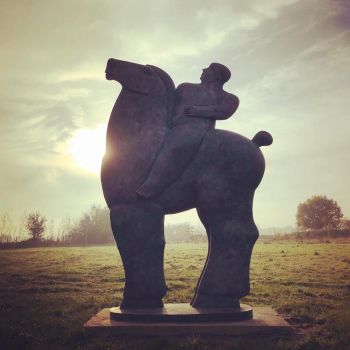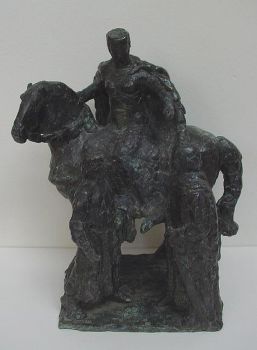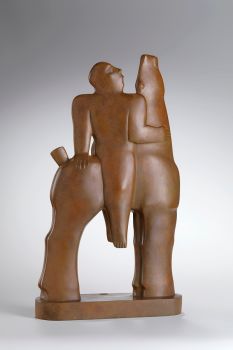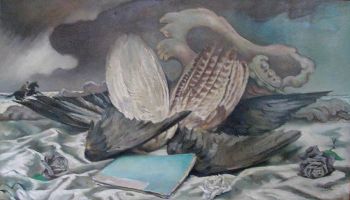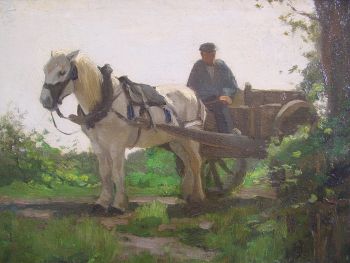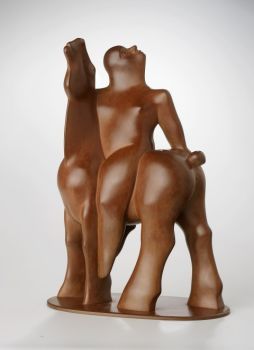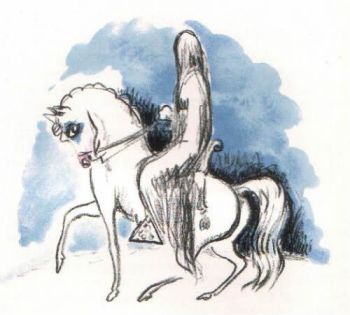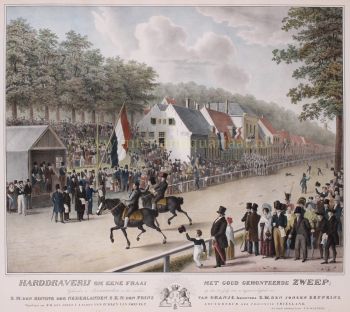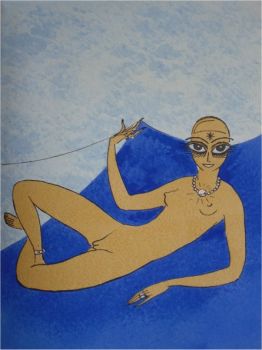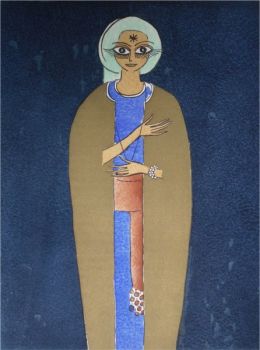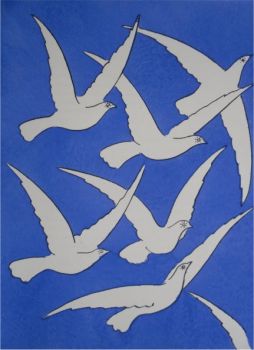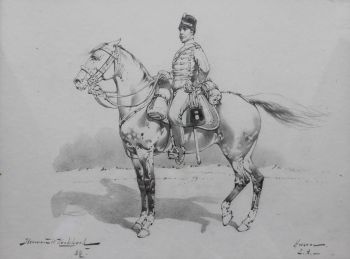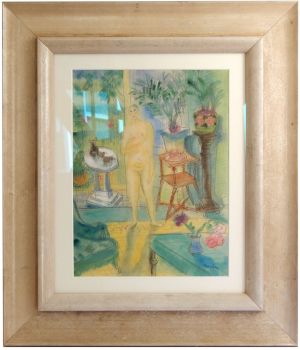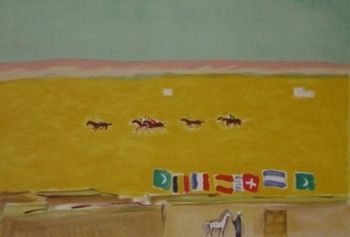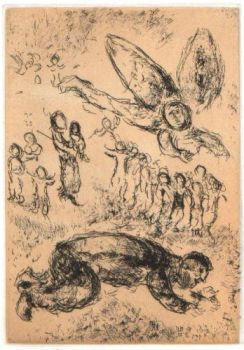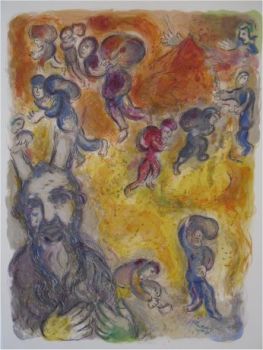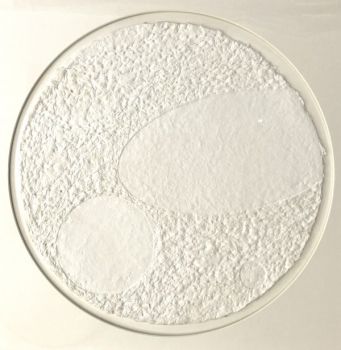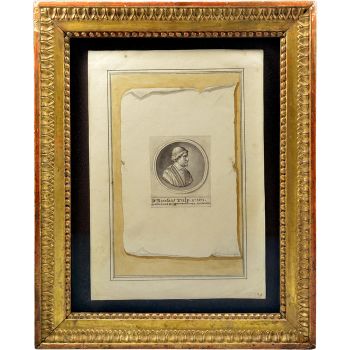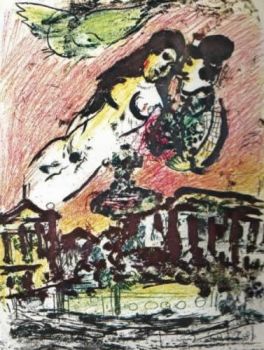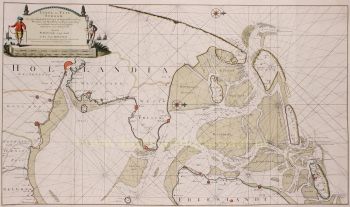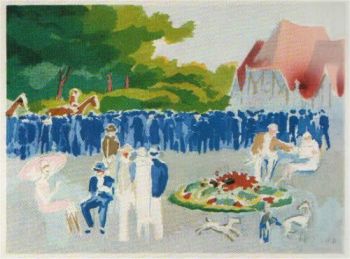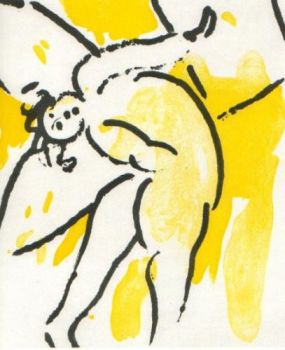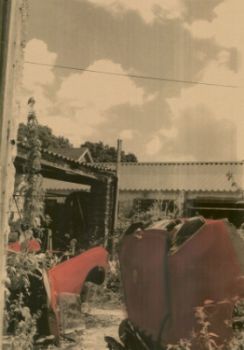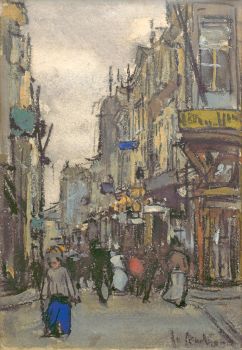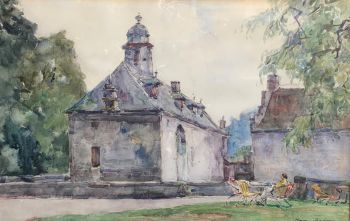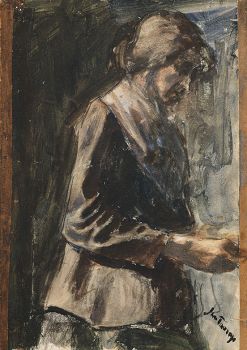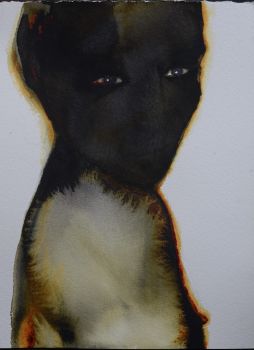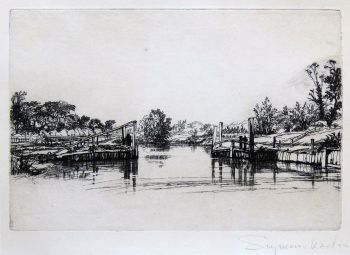'A Mameluk Leading His Horse' and 'Fight between a hussar and Mameluk'.(2x) 1820
Carle Vernet
EncrerPapierAquarelle
73 ⨯ 94 cm
Actuellement indisponible via Gallerease
- Sur l'oeuvre d'artCarle Vernet: 'A Mameluk Leading His Horse' and 'Fight between a hussar and Mameluk'.
Two aquatint etchings in color, enhanced with watercolor. Engraved by Philibert-Louis Debucourt (1755-1832) after paintings by Carle Vernet.
Printed by Daude and published by Charles Bance & Aumont in 1820.
The aquatint 'Combat' with the year 1811 in the plate for the year in which the original painting was made.
In 19th century frames with title description in French.
One aquatint with no margins, the other with folded margins.
Antoine Charles Horace (Carle) Vernet was a French painter, the youngest child of Claude Joseph Vernet, and the father of Horace Vernet. Born in Bordeaux, Vernet was a pupil of Nicolas-Bernard Lépicié. After being awarded the Prix de Rome in 1782, the painter spent some time in Rome. Vernet joined the Paris painting academy in the course of the same year as the outbreak of the French Revolution. 1799 was a crucial turning point in Vernet’s oeuvre: he exhibited drawings from Napoleon’s Italian campaign in a new and original style, which has prompted scholars to argue that Vernet’s contribution was essential in introducing strategy and verisimilitude in contemporary battle painting. This was in large part due to his exceptional ability to paint horses. Napoleon awarded him the Legion of Honour. Louis XVIII awarded him the Order of Saint Michael.
These aquatints depict Mameluk soldiers, renowned for their ferocity and superb abilities as cavalrymen. A Cairene citadel can be seen in the background. The Mameluks began as a slave warrior caste in the 9th century, created by Muslim rulers. They later became landowners and rulers in their own right, primarily in Egypt. By the Napoleonic era, their influence was on the decline, however, they were still a fearsome fighting force. Napoleon defeated the Mameluk army when he invaded Egypt in 1798, but was greatly impressed with their courage. He created a special Mameluk corps in the French army, and he, himself, had a Mameluk body guard named Roustan. In one of these aquatints, the Mameluk is armed with a scimitar, rifle and brace of pistols, and wears the uniform of the Napoleonic squadron before 1804: the green cahouk (hat) wrapped with a white turban, red sarousal (trousers), loose white shirt and waistcoat. - Sur l'artisteNé à Bordeaux, Vernet est l'élève de son père et de Nicolas-Bernard Lépicié. Étrangement, après avoir remporté le grand prix (1782), son père a dû le rappeler de Rome en France pour l'empêcher d'entrer dans un monastère. Dans son Triomphe d'Aemilius Paulus, il rompt avec la tradition et dessine le cheval avec les formes qu'il a apprises de la nature dans les écuries et les manèges. Ses pièces de chasse, ses races, ses paysages et son travail de lithographe étaient également très appréciés. La sœur de Carle a été exécutée à la guillotine pendant la Révolution. Après cela, il a abandonné l'art. Le four à plâtre de Montmartre Lorsqu'il recommença à produire sous le Directoire français (1795-1799), son style avait radicalement changé. Il a commencé à dessiner dans les moindres détails des batailles et des campagnes pour glorifier Napoléon. Ses dessins de la campagne d'Italie de Napoléon ont été salués, tout comme la bataille de Marengo, et pour son Matin d'Austerlitz, Napoléon lui a décerné la Légion d'honneur. Louis XVIII de France lui a décerné l'Ordre de Saint Michel. Par la suite, il a excellé dans les scènes de chasse et les représentations de chevaux. En plus d'être peintre et lithographe, Carle Vernet était un cavalier passionné. Quelques jours à peine avant sa mort à l'âge de soixante-dix-huit ans, on l'a vu courir comme s'il était un jeune homme enjoué. Il est mort à Paris.
Artwork details
Catégorie
Sujet
Style
Matériel & technique
Couleur
Related artworks
- 1 - 4 / 21
Jan Sluijters
Original illustration of Sluijters for the book: 'Laura's opstel'1881 - 1957
Prix sur demandeKunsthandel Pygmalion
1 - 4 / 24- 1 - 4 / 24
- 1 - 4 / 24

